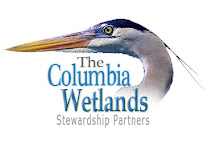
Every year since 1978, volunteers have participated in Christmas Bird Counts (CBC) in the Columbia Valley. It is part of the longest-running wildlife census in the world. There is a specific methodology to the CBC, but everyone can participate. The counts are conducted on any one day between December 14 and January 5 inclusive. They are carried out within a 24-km diameter circle that stays the same from year to year. Each circle is led by a Count Compiler. Therefore, if you are a beginning birder, you will be able to join a group that includes at least one experienced birdwatcher. In addition, if your home is within the boundaries of a Count Circle, then you can stay home and report the birds that visit your feeder.
But why count birds? First, the event is way to enjoy birds and have fun with others who love them. Secondly, birds are an indicator of what's happening. Changes in numbers over time can reveal changes in habitat and can help measure environmental problems like pollution and global warming.
For more information or to participate
December 27, Golden,
contact Ellen Zimmerman (250) 348 2225
December 26, Lake Windermere District
contact Cam Gillies (250) 342 9605

